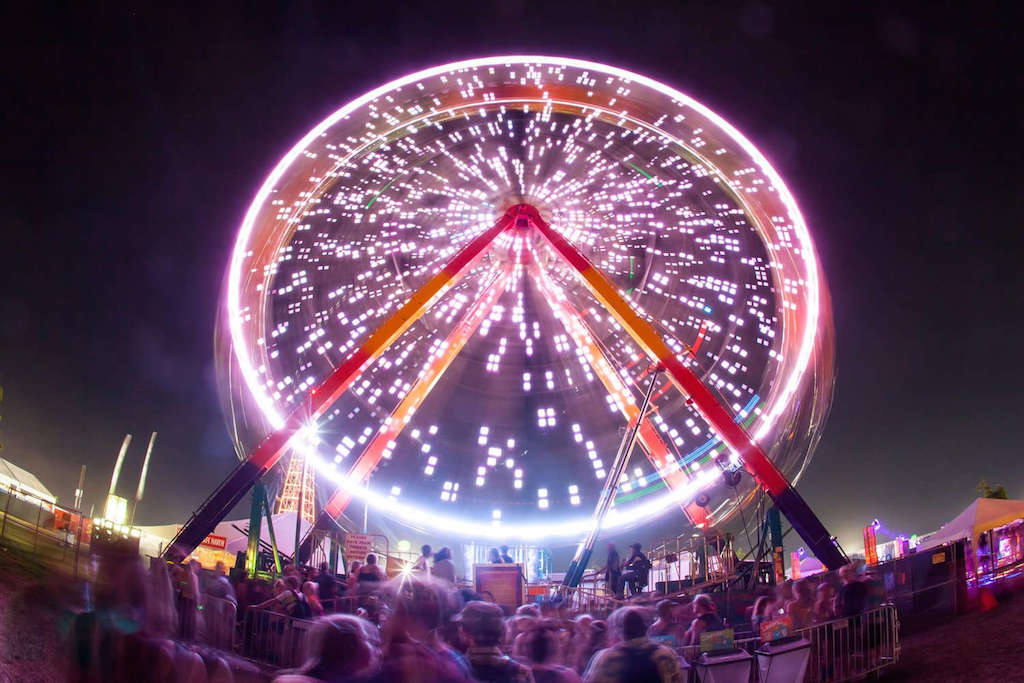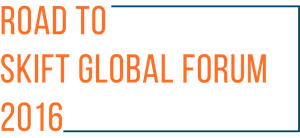Skift Take
The future of conferences and live events places a priority on bringing together thought leaders and influencers from more diverse segments, because creative audiences today want a mashup of tech, arts, and educational experiences.
On September 27 to 28, nearly 1,000 of the travel industry’s brightest and best will gather in New York City for the third annual Skift Global Forum, the largest creative business gathering in the global travel industry. In only two short years it has become what media, speakers, and attendees have called the “TED Talks of travel.”
This year’s event at Alice Tully Hall, Lincoln Center will feature speakers including the CEOs of Marriott International, Carnival Corp., Expedia, TripAdvisor, Etihad Aviation Group, Club Med, and many more.
The following is part of a series of posts highlighting some of the speakers touching on big-picture issues that may begin in travel, but also impact businesses and industries beyond the sector.
Why do conferences such as South by Southwest (SXSW) in Austin, or festivals like Bonnaroo in rural Tennessee, reach almost cult-like status while similar live events struggle to grow?
REGISTER NOW FOR SKIFT GLOBAL FORUM
As more brands look to live events for experiential marketing platforms to complete their overall marketing strategy, that question is taking on renewed importance.
Mike Shea, executive director of SXSW, and Richard Goodstone, co-founder of Superfly, which produces Bonnaroo, suggest that their events’ success is based on understanding what motivates and excites the creative mind today.
They both told Skift that their “secret sauce” revolves around creating interdisciplinary, interactive experiences that bring together ambitious people from divergent backgrounds; merging professional and personal development opportunities; and marrying the online and offline worlds to build heightened levels of attendee and brand engagement.
The Future of Music & Art Festivals
Taking place at “The Farm” outside Manchester, Tennessee, 65 miles southeast of Nashville, Bonnaroo illustrates the expanding scope of consumer-facing live events that bring together more multi-disciplinary brands and experiences to help attendees better customize their participation.
Consumer data is driving some of those programming decisions.
“We have a deep pipeline of knowledge and data to help us understand our audience better, and I think the most important thing we realized early on is that passions don’t live in silos,” said Goodstone. “At Bonnaroo, we’re drawing people who are coming on a pilgrimage to meet old friends and make new ones, who are curious and have an open frame of mind about many different things.”
The programming at Bonnaroo integrates live music concerts, DJ parties, interactive performance art, vintage and pop-culture cinema, multiple comedy theaters, group dance and yoga sessions, and a plethora of outdoor activities — all with a spirit of co-creating new experiences and building relationships among the hundreds of artists, sponsors, and 85,000 attendees.
“We create experiences and magical moments that have a profound impact on people’s lives by super-serving our audience,” explained Goodstone.
However, he added, “We’ve always considered ourselves brand builders, not musical, comedy, and film festivals.”
One way that Bonnaroo attracts the interest of brands is by collecting deep data on audience behavior, some of which the festival posts on its website.
Companies including Miller Lite, Red Bull, GNC, Teva, New Balance, Ford, MTV and many others sponsor individual event activations targeting their specific audiences, which Bonnaroo helps brands identify and define based on rich data capture systems using technologies such as beacons, RFID wristbands, social media analytics, and advanced event registration.
The data tech itself, however, isn’t particularly new. The real innovation is creating an experiential marketing platform delivering so many brand engagements to so many mostly Millennial-age consumers at a pop culture festival.
Music and arts festivals, in other words, are no longer solely about music and arts.
“Bonnaroovians are a community; they’re a tribe,” summed up Goodstone. “Our data helps us understand our audience better, which is what this is all about. And we ask a lot of questions. It doesn’t take a rocket scientist to ask the right questions to the right people.”
The Future of Business-To-Business Events
From an industry brand-building perspective, SXSW has managed to strike the right balance between connecting buyers and suppliers, and delivering what Shea calls “profound experiences for the creative community.”
The show’s biggest coup was bringing President Obama to Austin in 2016 to promote the need for more private industry innovation in civic tech.
“The South by Southwest experience is geared toward industry more than consumers, and what we do well is getting the creative community in one room to launch next-generation product platforms for the beta community,” Shea said. “We create opportunities and places where magic happens.”
One of the biggest factors behind the success of SXSW from a participant point of view is how the event merges three conference/festival platforms: Music, Film and Interactive. Few other industry events bring together such a varied roster of cultural, academic and business thought leaders, such as the producers of Mr. Robot and Japan’s leading robotics scientists earlier this year.
For the 2017 show, SXSW is now streamlining the event into one unified experience with 24 different programming tracks. People can still purchase single badges for one of the three segments (or an all-inclusive Platinum badge), but now they have access to the bulk of sessions across the entire SXSW lineup.
A new tier system has been implemented to make this work. For attendees with single Music, Film, or Interactive badges, they have first-tier access to events in their segment, and second-tier access to sessions in the other two.
“The fact that we have so many convergent sessions that speak to people in different sectors has been hugely important to our success,” Shea explained. “So we’re trying to blur the lines a bit with these 24 tracks.”
The volume of interdisciplinary content at SXSW can be a double-edge sword, however. With so much going on, how do you choose, develop and curate programming without losing the event’s overall direction and brand voice?
One way is digital crowdsourcing to help inform content development.
The SXSW PanelPicker helps crowdsource content ideas eight months in advance of the following year’s event. People submit session ideas online, which are then voted on by the general public, along with SXSW’s staff and advisory team.
“The PanelPicker represents a way to get more input from the community, and build community,” Shea said. “That’s the secret sauce. It’s really about how the process gives a voice to our community, and it also gives us extremely valuable feedback about the continually evolving direction of South by Southwest.”
That said, Shea points out that he doesn’t want SXSW to feel too controlled. The art of event design includes channeling opportunities for spontaneous collisions between people and brands that might not be expected.
That’s the real value of combining music, film, tech, media, and marketing content under one big tent. Creativity is about making new connections that didn’t exist before, and those connections often happen by accident.
“As much as it’s our job to keep the train running on time, we’re also curating serendipity,” Shea said. “We want people to experience total surprise sometimes.”
Have a confidential tip for Skift? Get in touch
Tags: meetings and events, sgf2016, skift global forum, superfly, sxsw
Photo credit: The Bonnaroo music and arts festival draws 85,000 people and a bunch of heavyweight brands to rural Tennessee every year. Red Bull

